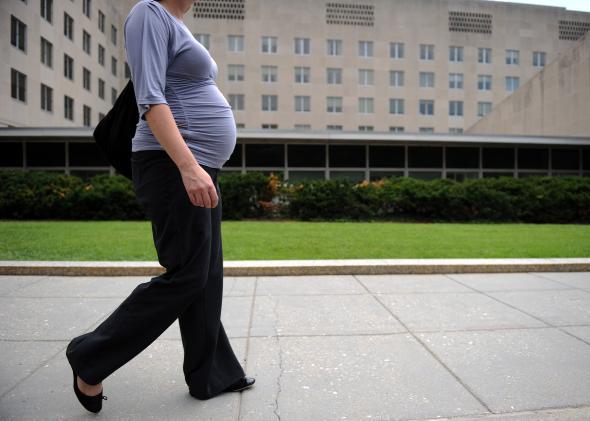As I wrote on Monday, unintended pregnancy is increasingly concentrated among lower-income women. That suggests a lot of the costs for those pregnancies will be covered by public health care systems such as Medicaid and the Children’s Health Insurance Program. But even knowing that, it’s still surprising to read a recent report from the Guttmacher Institute that shows exactly how much the government has to step in to cover the costs of unintended childbirth. In 2010, more than half of all births in the U.S. were covered by public health insurance. Unintended pregnancy was a huge driver of this phenomenon. “Public insurance programs paid for 68% of the 1.5 million unplanned births that year,” the fact sheet from Guttmacher reads, “compared with 38% of planned births.”
Pregnancy-related medical care isn’t cheap. Total government expenditures on unintended pregnancy in 2010 totaled $21 billion, or approximately $336 for every woman age 15-44 in the country. That’s an important number to keep in mind when you hear Republicans touting their willingness to slash family planning funding or even just denying that there’s a need to make contraception more affordable: For less than what we spend on the costs of unintended pregnancy, we could make sure every woman who wants reliable contraception can get it. In fact, as Guttmacher notes, “In the absence of the current U.S. publicly funded family planning effort, the public costs of unintended pregnancies in 2010 might have been 75% higher.”
The recent report from the Brookings Institution shows that women who make a middle-class or higher income have exponentially lower unintended childbirth rates than women living in poverty, in no small part because middle-class women use contraception and even abortion more, as needed, to time their pregnancies. This is disturbing on just a human rights level, because it suggests that lower-income women would like to be able to control their own fertility more but simply can’t because they don’t have the same access to contraception and abortion as middle-class women do. But if you aren’t moved by the human cost of an inadequate reproductive health care system for low-income women, perhaps looking at the price tag will do it. Women want to be able to plan when they give birth, and when they do so, they save us all some money.
